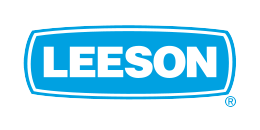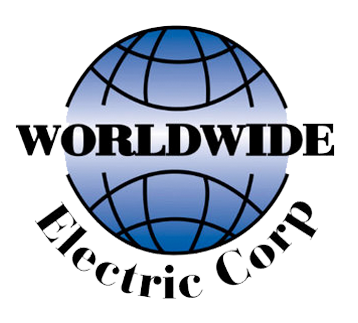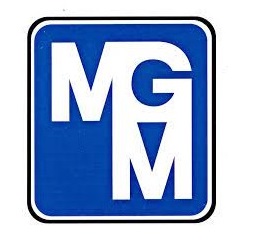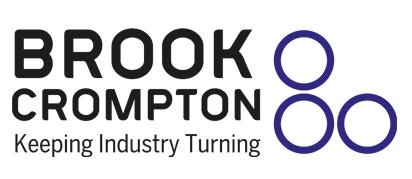
AC Electric Motors and Controls
An AC motor is an electric motor driven by an alternating current. The AC motor commonly consists of two essential parts, an outside stator having coils supplied with alternating current to produce a rotating magnetic field and an inside rotor attached to the output shaft producing a second rotating magnetic field.
Motor controls, also known as motor controllers, are devices that control the performance of an electric motor in a preset manner. Motor controls regulate the torque of the motor, control the speed of rotation, start and stop the operation of an electric motor, and protect the motor from electrical overloads and faults. We offer a wide range of AC motors (NEMA and IEC) and ac motor controllers.
HVH Industrial works with manufacturers' specialized engineering teams to meet our customers' requirements and highest quality standards.
If you have any questions, write us via live chat (one of our team members will answer your questions), call, or send us a quote request. The HVH team is always ready to help you.
 1(866)577-4040
1(866)577-4040
or
Manufacturers
Electric motors are an essential component of many industrial and commercial applications, powering everything from manufacturing equipment to household appliances.
What is an AC Motor
An AC electric motor is a device that converts electrical energy into mechanical energy. The motor is powered by an alternating current, which produces a rotating magnetic field. The interaction between the magnetic field and the conductors within the motor produces a torque that causes the motor shaft to rotate. AC motors are used in a wide range of applications, from small motors that power household appliances to large motors used in industrial machinery.
Types of AC Electric Motors
AC motors are classified as either induction or synchronous motors.
Induction Motors
An induction AC motor is an electric motor that works on the principle of electromagnetic induction. It converts electrical energy into mechanical energy by generating a rotating magnetic field. Induction motors are widely used in various applications, such as pumps, compressors, fans, conveyors, and mixers, among others.
Working Principle of Induction Motors
The working principle of an induction AC motor is based on the interaction between the magnetic field and the current-carrying conductor. The motor consists of a stator, a rotor, and a set of windings. The stator contains a set of stationary windings that are connected to an AC power supply. When the AC current flows through the windings, it generates a rotating magnetic field that rotates at the same frequency as the AC supply.
Synchronous Motors
The rotor contains a set of conductors that are arranged in such a way that they can rotate freely within the magnetic field. As the rotating magnetic field passes over the conductors, it induces a voltage in them, which in turn, generates a current that produces a magnetic field that opposes the rotating magnetic field. This interaction between the two magnetic fields causes the rotor to rotate in the direction of the rotating magnetic field.
Synchronous AC motors are a type of electric motor that operates on AC power and are called "synchronous" because the rotation of the motor's rotor is synchronized with the frequency of the AC power source. In other words, the rotor rotates at the same speed as the magnetic field generated by the stator. This makes them different from asynchronous motors, which operate at a speed slightly slower than the frequency of the AC power source.
Working principle of Synchronous AC Motors
Synchronous AC motors consist of two main parts: the stator and the rotor. The stator is the stationary part of the motor and contains the windings that generate the rotating magnetic field. The rotor is the rotating part of the motor and contains the magnets that interact with the stator's magnetic field to produce torque.
When AC power is applied to the stator, a rotating magnetic field is generated. This magnetic field interacts with the magnets on the rotor, causing it to rotate at the same speed as the magnetic field. This results in a constant speed of rotation, even under varying loads.
Modes of Electric Motors
AC motors are available in two modes, single-phase and three-phase. Single-phase motors are used in low-power applications, such as household appliances and small tools. They have a simple construction and are less expensive than three-phase motors. Three-phase motors, on the other hand, are used in high-power applications and are more efficient, and have a higher power-to-weight ratio than single-phase motors.
Moreover, electric motors are designed according to two standards, NEMA (National Electrical Manufacturers Association) and IEC (International Electrotechnical Commission). The primary difference between NEMA and IEC motors is their design and manufacturing standards.
NEMA motors are designed and manufactured in the United States, and they tend to be larger and more robust than IEC motors. On the other hand, IEC motors are designed and manufactured according to international standards, and they tend to be smaller and more compact than NEMA motors. IEC motors are commonly used in Europe, Asia, and other parts of the world.
AC Motor Drives
AC motor drives are electronic devices that are used to control the speed and torque of AC motors. They can be used with both synchronous and asynchronous motors and can provide precise speed control and energy savings. AC motor drives work by varying the frequency and voltage of the power supplied to the motor, which changes the speed and torque of the motor.
There are several types of AC motor drives, including variable frequency drives (VFDs), servo drives, and vector drives. VFDs are the most common type and are used in applications where precise speed control is required. Servo drives are used in applications where high precision and accuracy are required, such as in robotics and CNC machines.
The primary function of AC motor drives is to control the speed and torque of AC motors. They do this by varying the frequency and voltage of the AC power supplied to the motor. AC motor drives can also perform other functions such as:
-
Soft starting and stopping of the motor
-
Overload protection
-
Fault detection and diagnostics
-
Energy monitoring and optimization
Advantages of AC motor drives
The use of AC motor drives offers several advantages, including:
-
Improved energy efficiency: AC motor drives can reduce energy consumption by up to 50% by adjusting the motor speed to match the load requirements.
-
Extended motor life: By controlling the motor speed and torque, AC motor drives can reduce the wear and tear on the motor, thereby extending its life.
-
Precise speed control: AC motor drives offer precise control over the motor speed and torque, making them ideal for applications where accurate speed control is critical.
-
Reduced maintenance costs: By reducing wear and tear on the motor, AC motor drives can help reduce maintenance costs.















